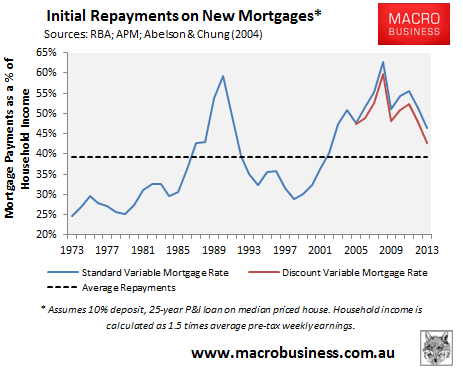
The Adelaide Bank/Real Estate Institute of Australia (REIA) has today released its quarterly affordability report, which revealed an ongoing improvement in home buyer affordability over the June quarter of 2013, although the number of first home buyers (FHBs) remains weak. Rental affordability also improved over the quarter.
According to the Media Release:
The latest Adelaide Bank/REIA Housing Affordability Report shows that housing affordability has now been improving for the past two years, with the proportion of income required to meet repayments at 28.7% – its lowest in a decade.
Real Estate Institute of Australia President, Peter Bushby says, “With the exception of the Northern Territory, all states and territories recorded improvements over the quarter, the largest in Queensland where the proportion of income required in order to meet loan repayments dropped by 1.9 percentage points to 26%”…
“Affordability is improved in all states and territories when compared to the same time last year and no doubt, the seven interest rate cuts since November 2011 have played a role.”
“The variable interest rate declined 0.2 percentage points, from 6.1% to 5.9% in the June quarter, which is a decrease of 0.7 percentage points compared to the same time last year and the three year fixed rate fell by 0.3 percentage points over the quarter and 0.9 percentage points compared to the June quarter 2012, to 5.1%.”
Below are some key charts from the report, showing housing affordability over time.
First, the proportion of median family incomes required to meet mortgage repayments has improved to 28.7% nationally from 29.9% in March 2013, with Sydney the most expensive capital and the ACT the most affordable (see below graphic).
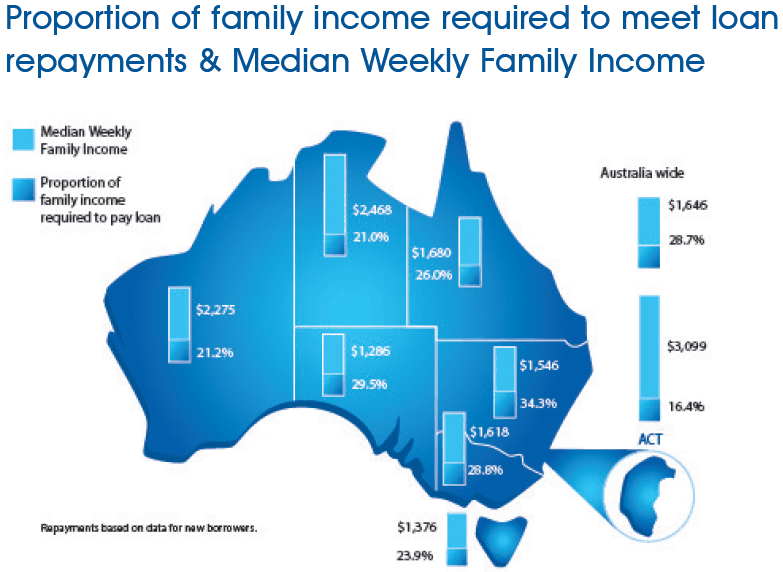
Affordability nationally is tracking near decade lows, but still worse than the 1990s (see next chart).
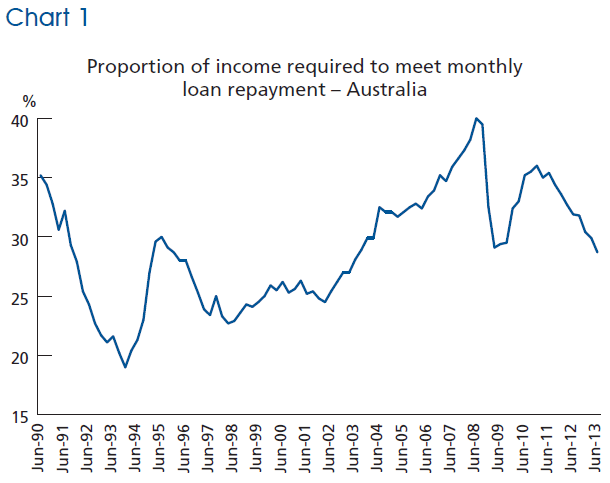
Rental affordability improved over the quarter, however, with the proportion of median family incomes required to meet rental repayments falling to 23.7% nationally from 24.4% in March 2013, but remains well above pre-2005 levels (see next chart).
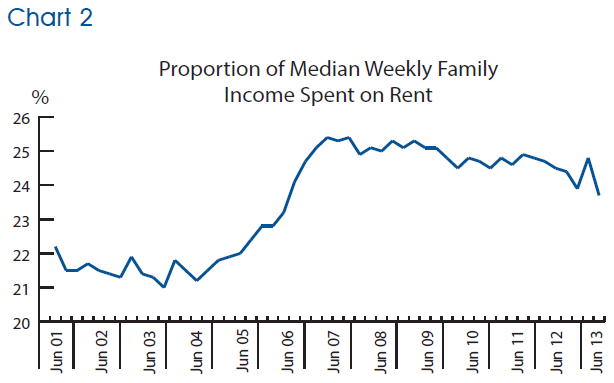
The situation facing FHBs remains difficult, however, with the REIV advocating further demand-side stimulus, despite overwhelming evidence that such policies merely force-up home prices and do not promote higher levels of home ownership:
“More is required to entice first home buyers back though, through stamp duty reforms, access to superannuation and first home buyers’ assistance. They made up just 14.6% of the owner-occupier market, a persistently low number compared to the long-run average proportion of 20%.”
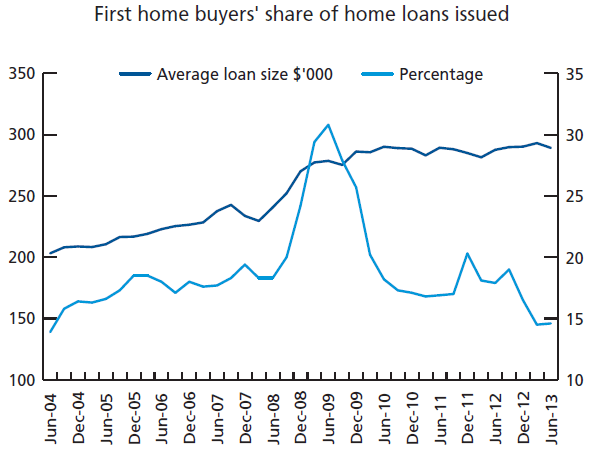
As noted last week in relation to the HIA housing affordability index, I have always had concerns with these types of affordability measures. How they can claim that housing affordability is currently above (HIA) or near (REIA) mid-1990 levels is beyond me, given that the median capital city house price in 1994 was only around $150,000 (compared with around $560,000 currently) and variable mortgage rates were just under 9.5% (versus 5.35% currently).
Further, averaging out the results from Australia’s four main house price data providers – the ABS, APM, RP Data, and Residex – showed an increase in median house values of just under 2% over the June quarter, whereas the REIA reported a strong 3.3% rise in values over the quarter. Given that variable mortgage rates fell by only 0.25% over the quarter, and wages growth was subdued, I fail to see how both the HIA and REIA housing affordability indices could then have shown such marked improvements.
More broadly, housing affordability (i.e. the cost of the home relative to incomes) and mortgage serviceability (the immediate cost of servicing the loan) are not the same thing. The former has only improved modestly, whereas the latter has improved significantly thanks to the reduction in interest rates, which are unlikely to always remain so low. In this regard, both indices should really be labelled a “mortgage affordability index”, since they measure the current cost of obtaining a mortgage on a median priced home, not the structural cost of housing per se.
By comparison, my own mortgage affordability index is shown below, with median house prices derived from Abelson & Chung (2004) and APM, variable mortgage rates from the RBA, and household income measured as 1.5 times average pre-tax weekly earnings. As you can see, affordability has certainly improved in recent times, although it remains below the long-term average (see next chart).
